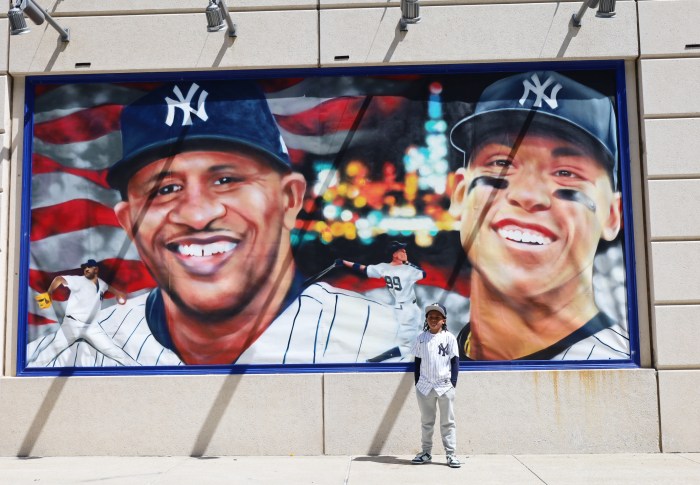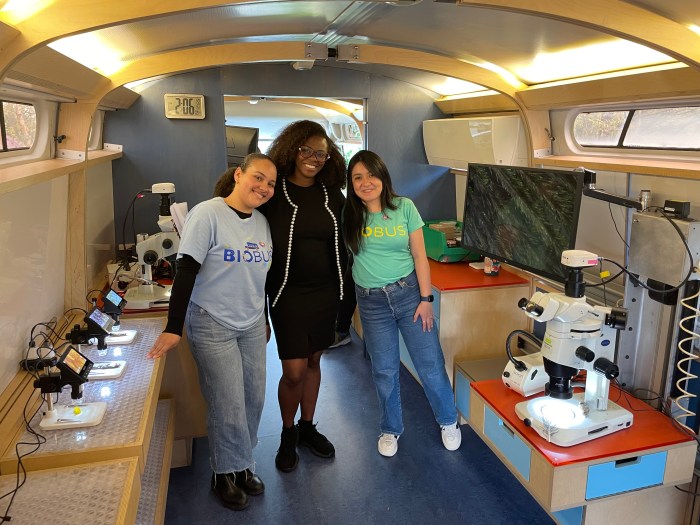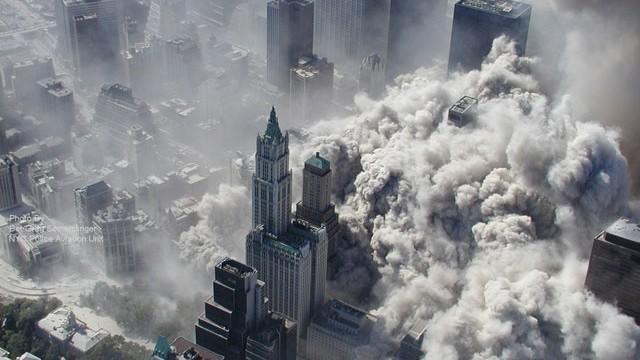
The dust cloud from the collapse of the World Trade Center engulfed Downtown — and everyone in it — leaving a legacy of illness that continues 15 years later.
BY COLIN MIXSON
In 2001, Kimberly Flynn spent her days poring over research for the Environmental Law and Justice Project at the organization’s Broadway office Downtown, about eight blocks from the World Trade Center, but on Sept. 11, her work took her to New Jersey, sparing her from the initial inundation of toxic dust that enveloped Lower Manhattan with the collapse of the Twin Towers.
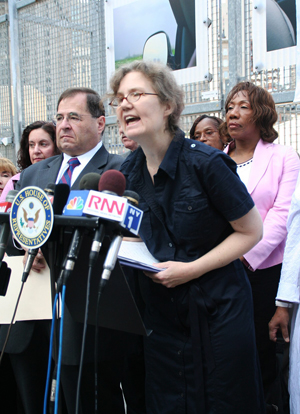
Kimberly Flynn, co-founder of 9/11 Environmental Action, speaking at a 2008 rally pressing for Congress to pass the Zadroga Act to provide healthcare and monitoring for Downtowners and 9/11 first responders made ill by exposure to toxic dust.
But Flynn soon found herself consumed by the deluge of noxious particles in a different way as she dedicated herself to exposing the harm it was doing to Downtown residents and Ground Zero workers in the months that followed the 9/11 attacks.
“What happened was it became very clear to me that the residents of Lower Manhattan were — quite literally — being left in the dust,” said Flynn.
When the dust settled after the terrorist attack, it settled everywhere — in homes, offices, and classrooms — carrying toxic levels of lead, asbestos, and a litany of heavy metals that have since claimed hundreds of lives through illness.
“People were saying, ‘I tried to move back in to my apartment in Battery Park City and saw this dust glittering like eye shadow,’” said Flynn.
But the Environmental Protection Agency, along with local health agencies, maintained that the dust was harmless, according to Flynn, and as first responders labored without respirators at Ground Zero, locals were encouraged back into their homes and shovel out the poisonous particulates by hand — with devastating consequences.
“Everyday people who tried to clean their homes are among the people who are sick today,” said Flynn.
Locals began to suspect that there was a deliberate cover up of the health risks -of exposure to the ubiquitous dust — not least because the city government wanted to maintain strict control of all test results, according to Madelyn Wils, who was chairwoman of Community Board 1 at the time.
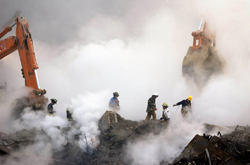
Even a month after the 9/11 attacks, the still-smoldering wreckage at Ground Zero spewed noxious smoke and toxins into the air.
“We had to sneak scientists past the barricades in the middle of the night to take samples from the apartments because the Giuliani administration would allow access if only his office got the results,” she said.
Wils said the Health Department was also too slow in informing residents how to clear debris from their homes.
“People were already cleaning their apartments by the time it became known you needed to hire a professional company to do something like that,” she said.
In fact, former New Jersey Gov. Christine Todd Whitman, who headed the EPA at the time, recently apologized for the misleading assurances her agency gave about the air quality Downtown after 9/11. In an interview with the Guardian, Whitman said she cringes every year at the anniversary of the attacks, knowing that many blame her for the needless illness and death of thousands.
“Every time it comes around to the anniversary I cringe,” she told the Guardian, “because I know people will bring up my name, they blame me, they say that I lied and that people died because I lied, [they say] people have died because I made a mistake.”
Whitman personally apologized for the ensuing health crisis.
“I’m very sorry that people are sick,” she said. “I’m very sorry that people are dying and if the EPA and I in any way contributed to that, I’m sorry.”
Flynn went on to help found 9/11 Environmental Action, a group dedicated to bringing the dust’s harmful effects to light. By 2006 the group had succeeded in dispelling the official myth, as a Pace University poll revealed that virtually nobody believed the 9/11 dust was safe, despite the EPA’s repeated assertions to the contrary.
“What we accomplished was we raised awareness throughout the affected area that the smoke and dust from 9/11 did pose a health threat to people who were exposed.” said Flynn. “By 2006, nobody believed the EPA’s declaration that the air was safe.”
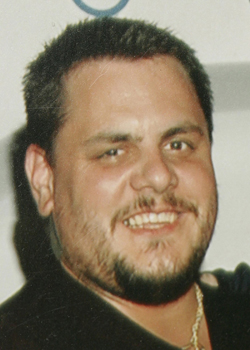
NYPD detective James Zadroga died of respiratory disease in January 2006, and an autopsy found glass particles in his lungs attributed to his work at Ground Zero.
That same year, NYPD detective James Zadroga died of respiratory disease, and an autopsy found glass particles in his lungs attributed to the dust he inhaled at Ground Zero.
Flynn and others lobbied Washington for years to provide health care and compensation for first responders and Downtowners made ill by exposure to the toxic dust. Finally, in late 2010, Congress passed the Zadroga Act, providing health care for first responders and recovery workers, and reopening the Victim Compensation Fund for another five years with $5.2 billion in funding.
Two years after that, the program was expanded to cover a range of cancers later linked to toxic exposure at Ground Zero. And just last year, after the initial funding ran out, Congress reauthorized the Zadroga Act with nearly $8 billion in additional money to keep the Victim Compensation Fund open for five more years and ensure that the WTC Health Program would operate for another 75 years.
More recent research has found even more profound health effects linked to exposre to 9/11 dust. A paper published in the American Journal of Public Health found a link to low birth weight in babies bore to women affected by 9/11 event three years after the attacks. A study by Stony Brook University has found memory and cognitive problems in individuals exposed to Ground Zero toxins. And the New York Post recently reported a finding by the WTC Health Program that new cancer diagnoses among enrollees have nearly trippled in the past 2 and a half years.
A portion of the renewed Zadroga funding was allocated to 9/11 Environmental Action to support continued outreach, so its work continues today, according Flynn, because many locals still don’t know their rights.
Of the nearly 400,000 people Downtown who were exposed to contaminants after 9/11 attacks, just 82,000 — only about 20 percent — have enrolled in the WTC Health Program, Flynn said.
“What we’re doing now is we’re engaged pretty much full-time in outreach and education for the WTC Health Program,” she said. “We fought for the ounce of prevention, and now we’re fighting for the pound of cure.”
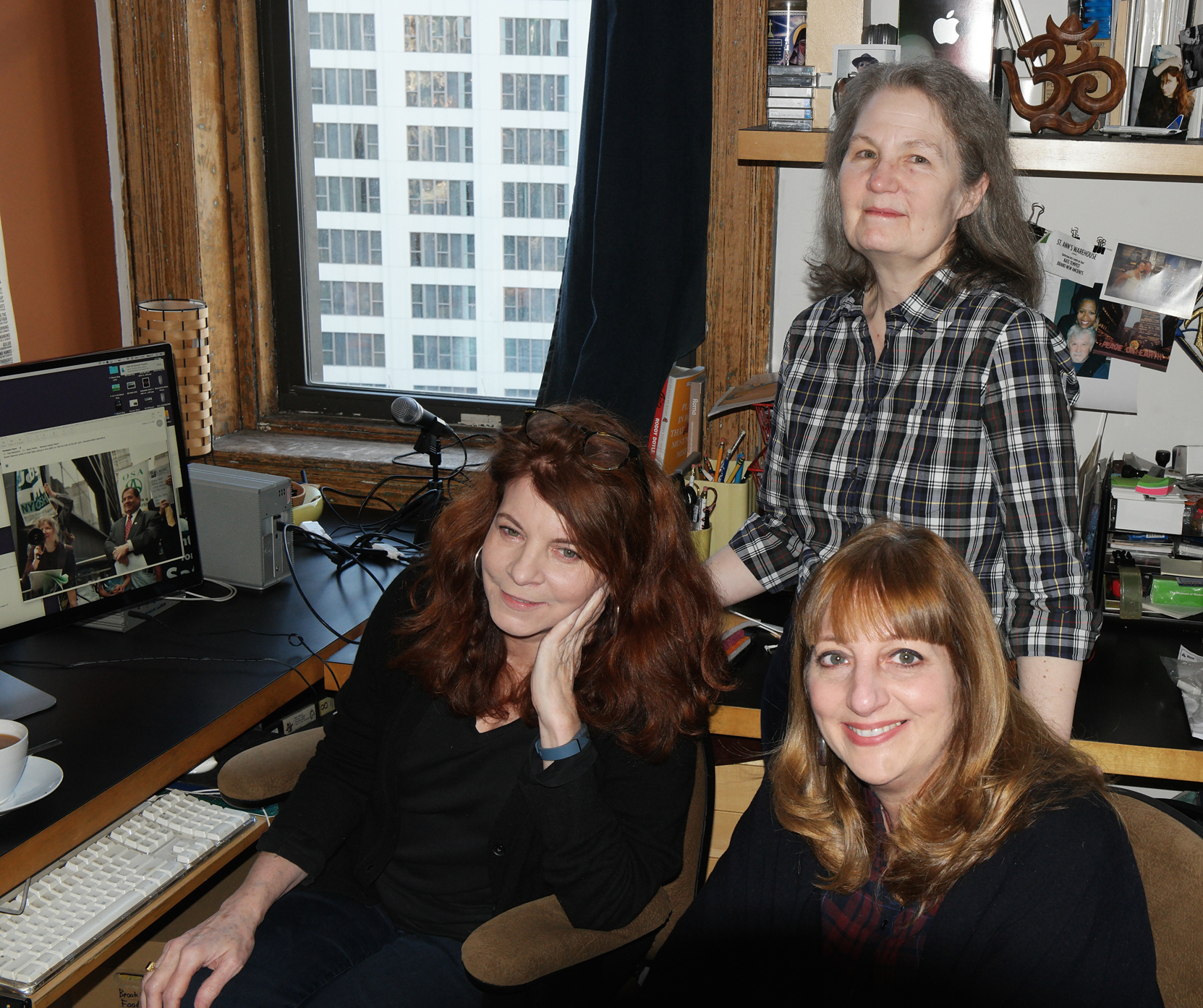
Mary Perillo, Kimberly Flynn, and Barbara Reich of 9/11 Environmental Action, working out of Perillo’s Cedar St. apartment, are continuing their efforts to enroll Downtowners who survived the 9/11 attacks in the WTC Health Program.














